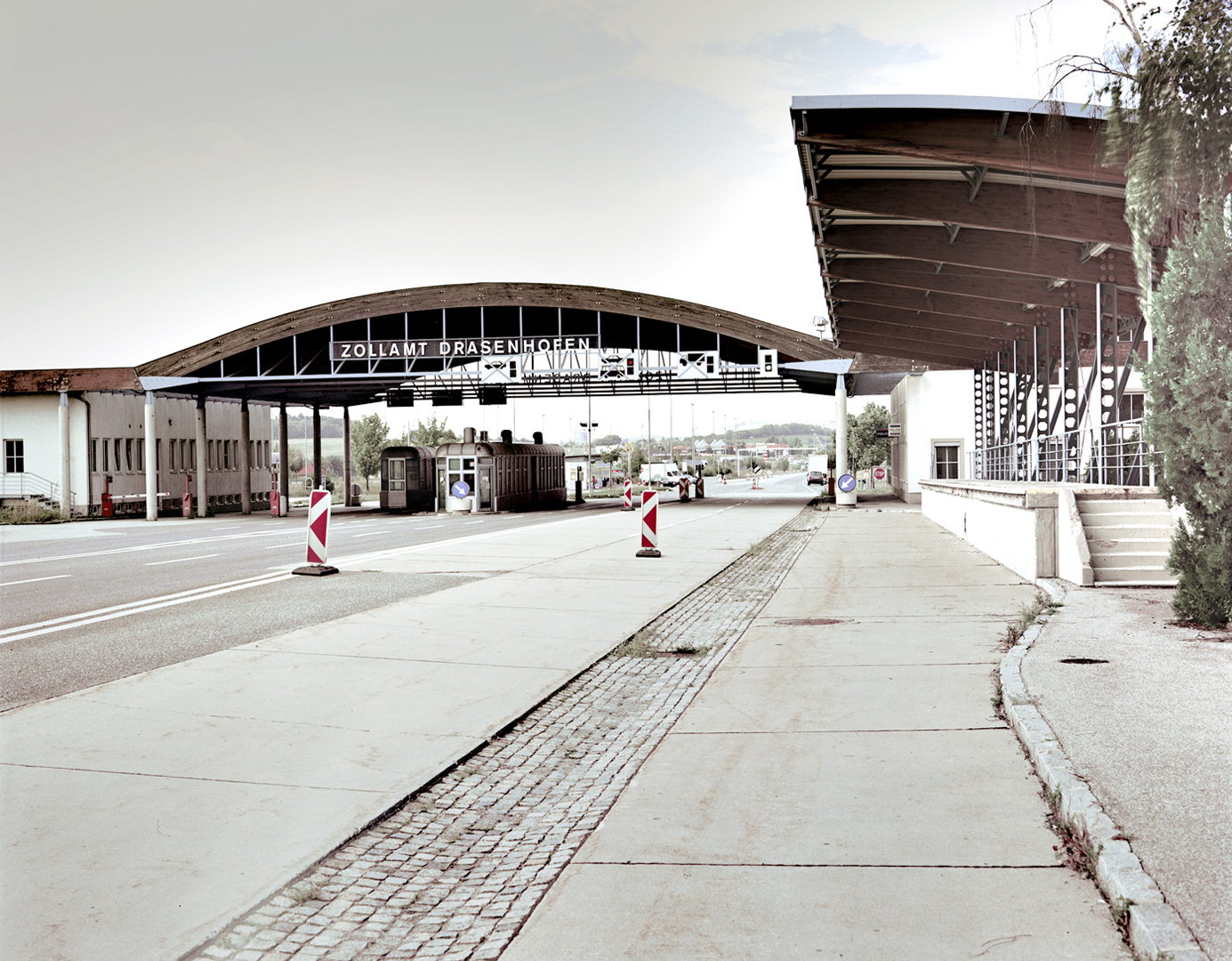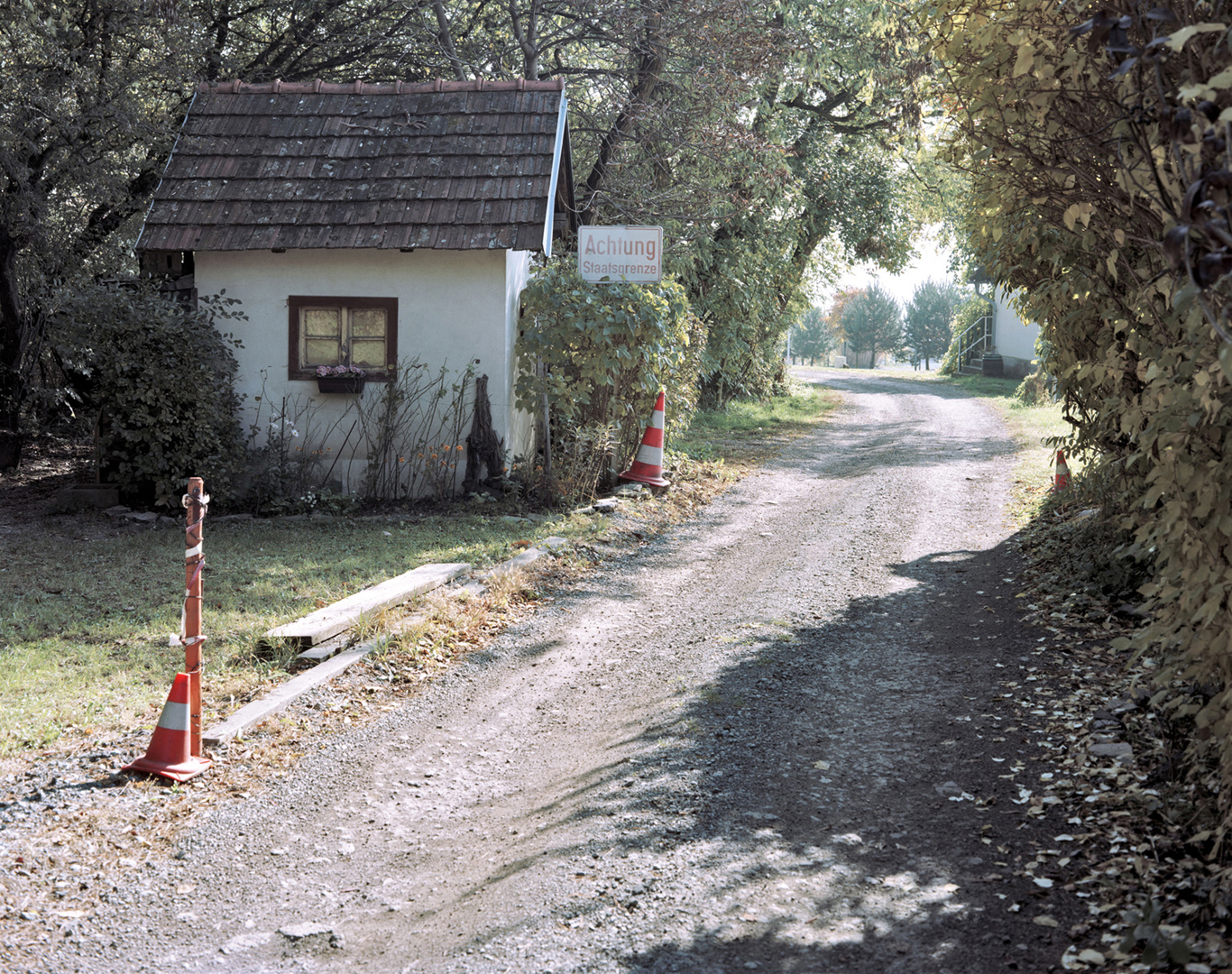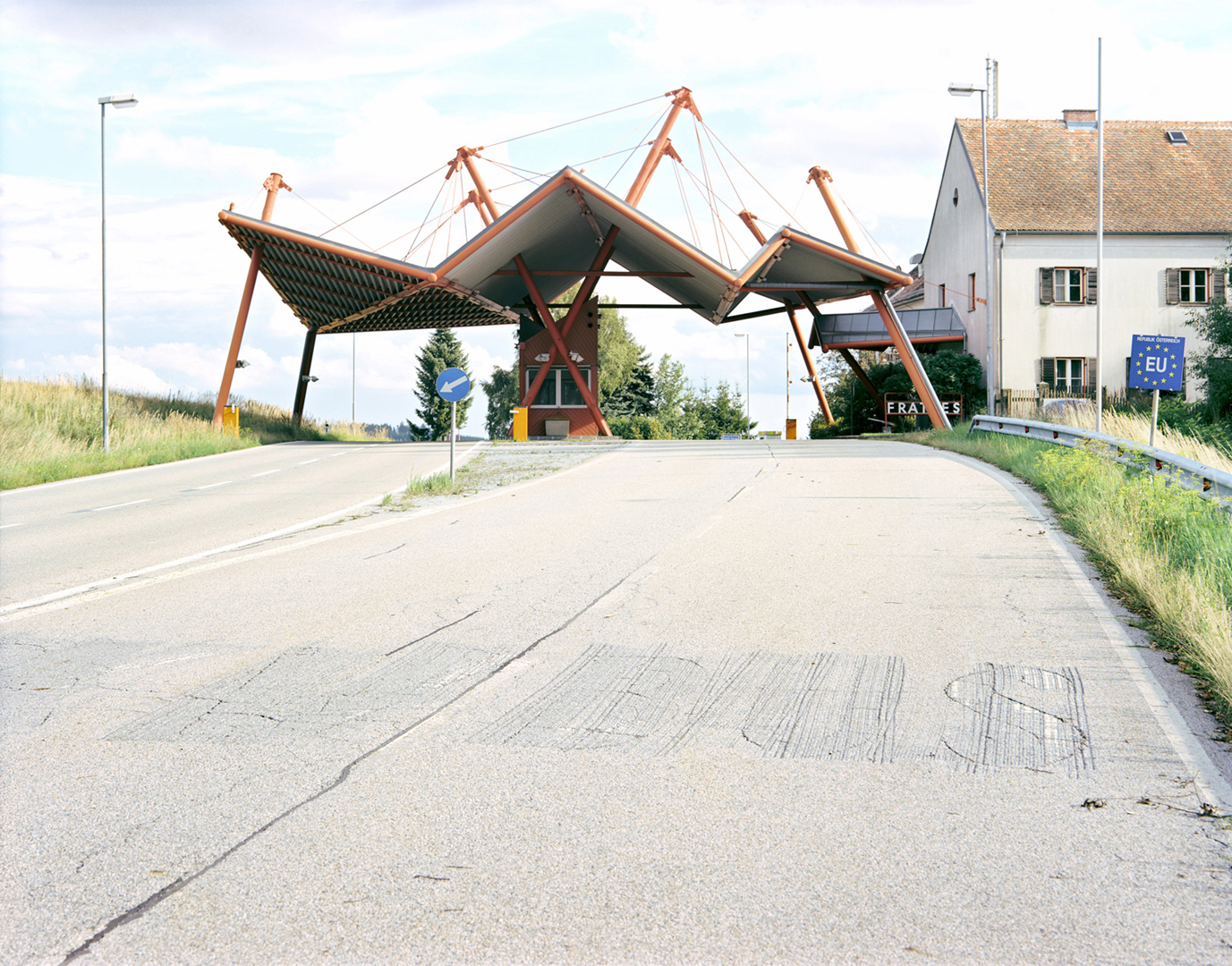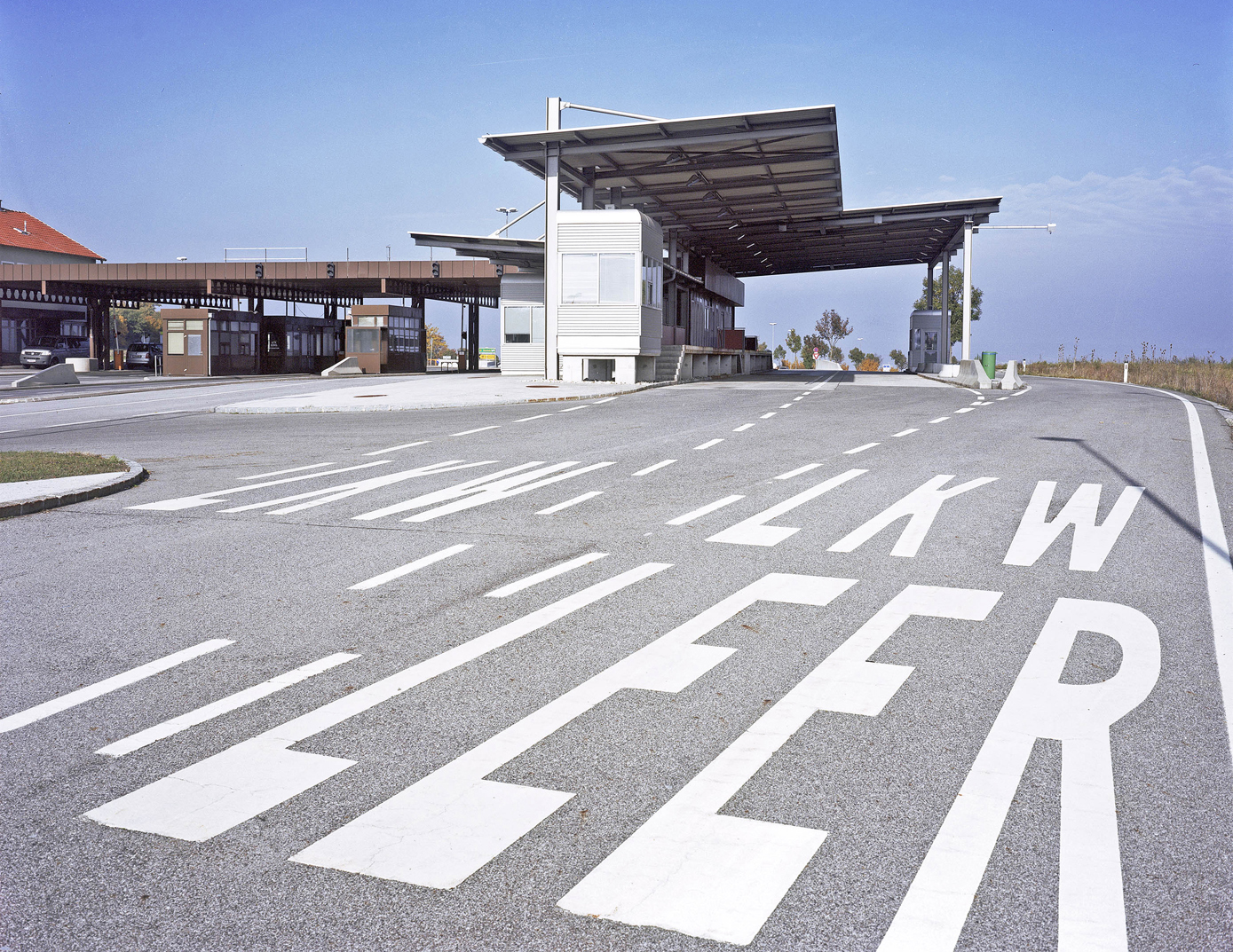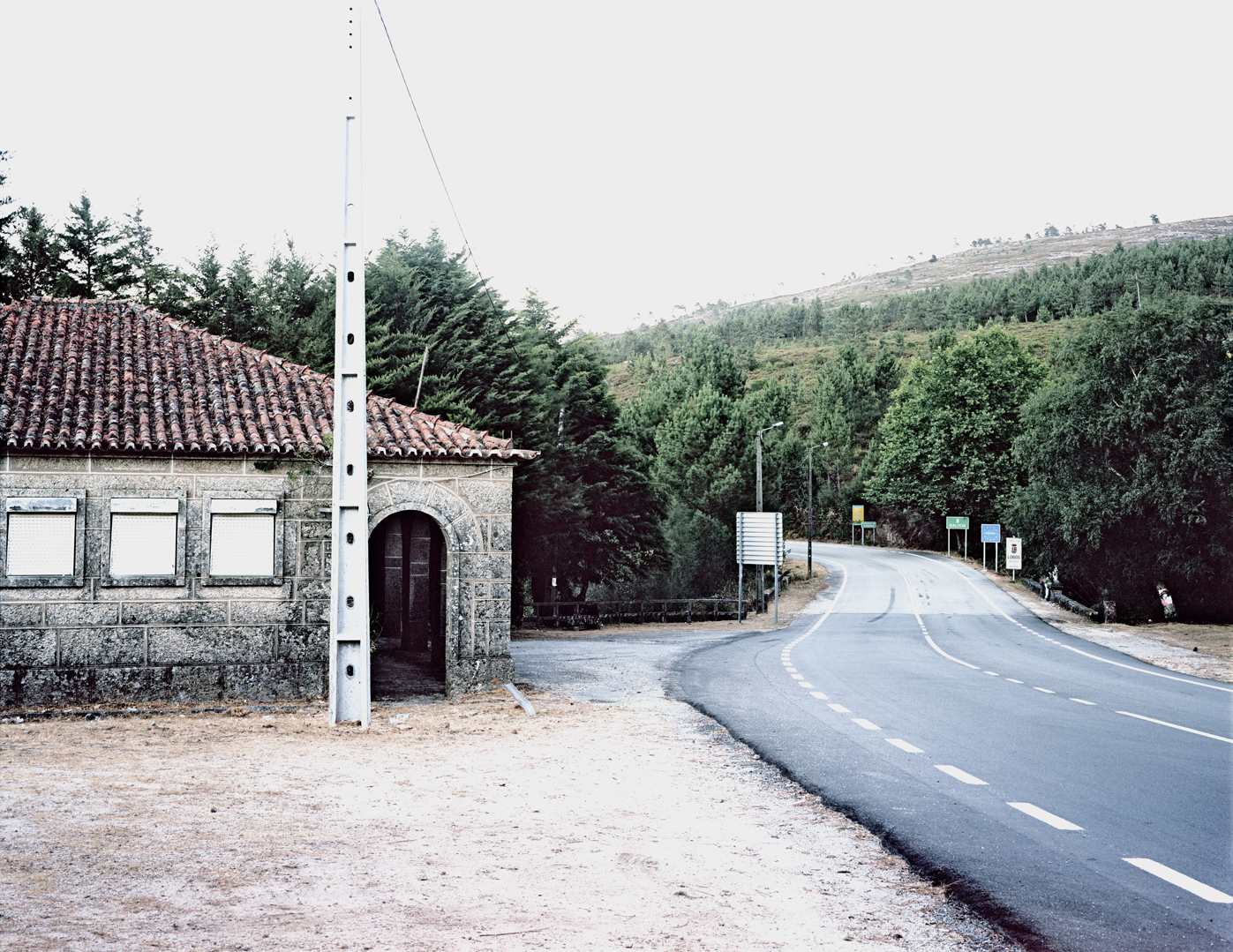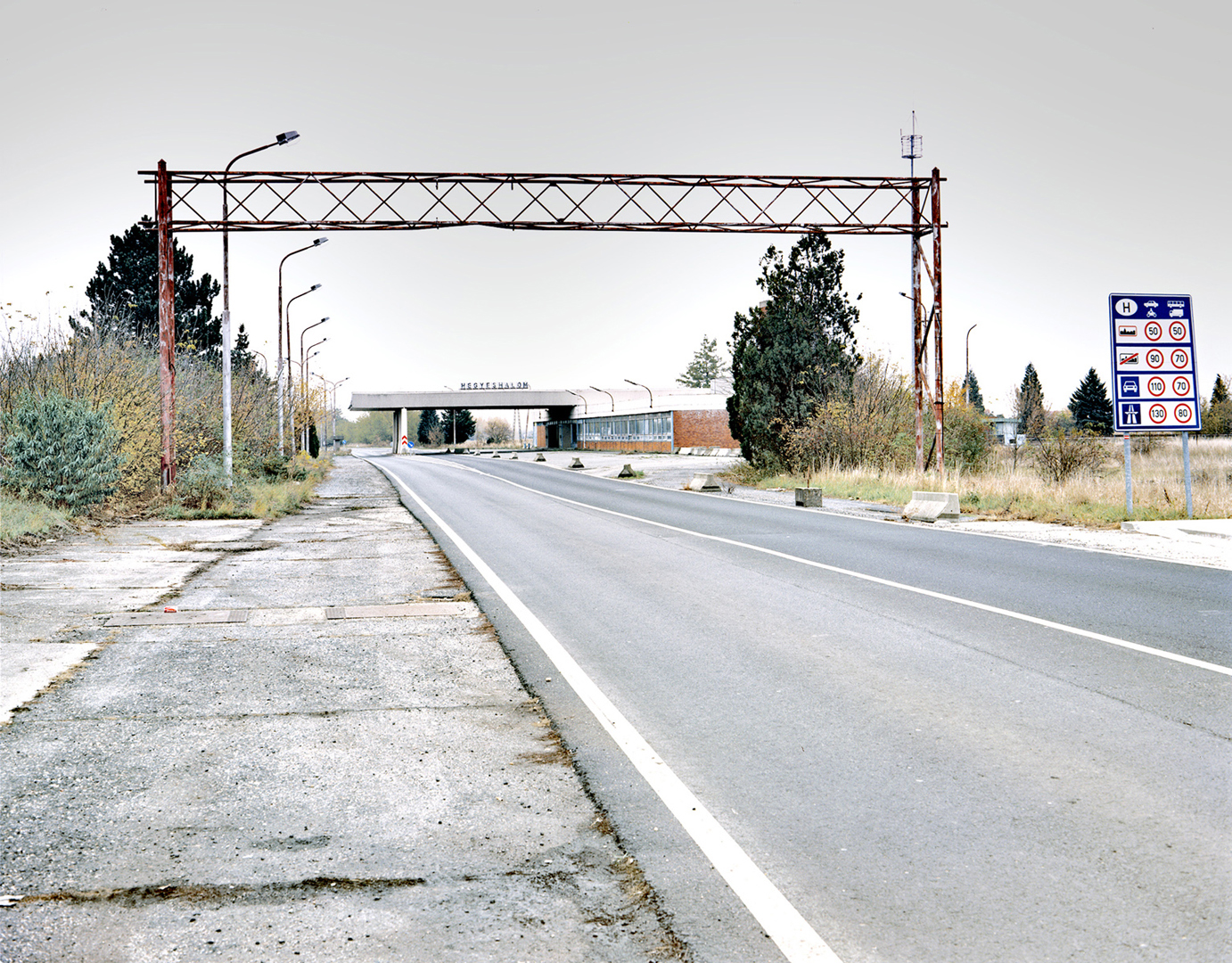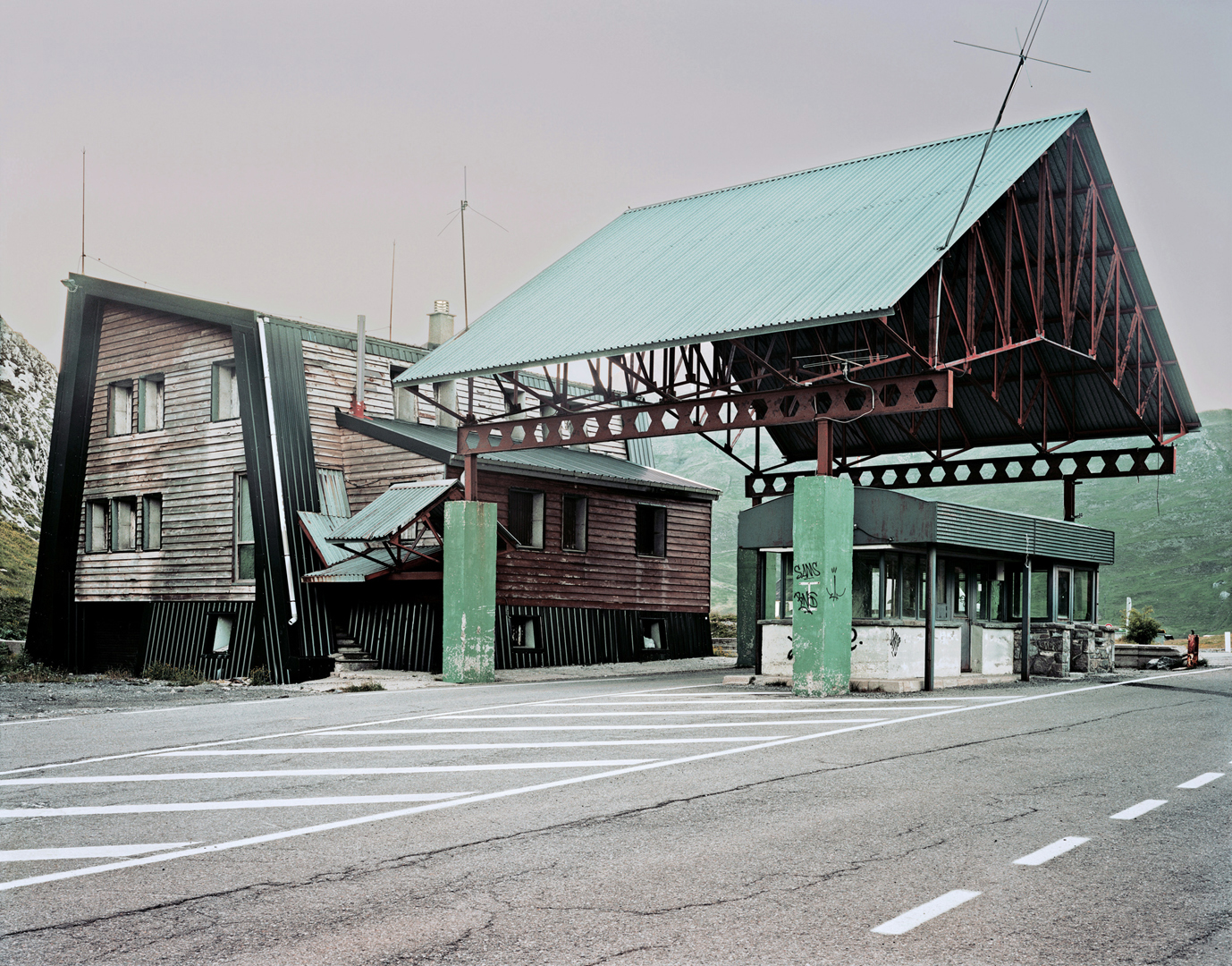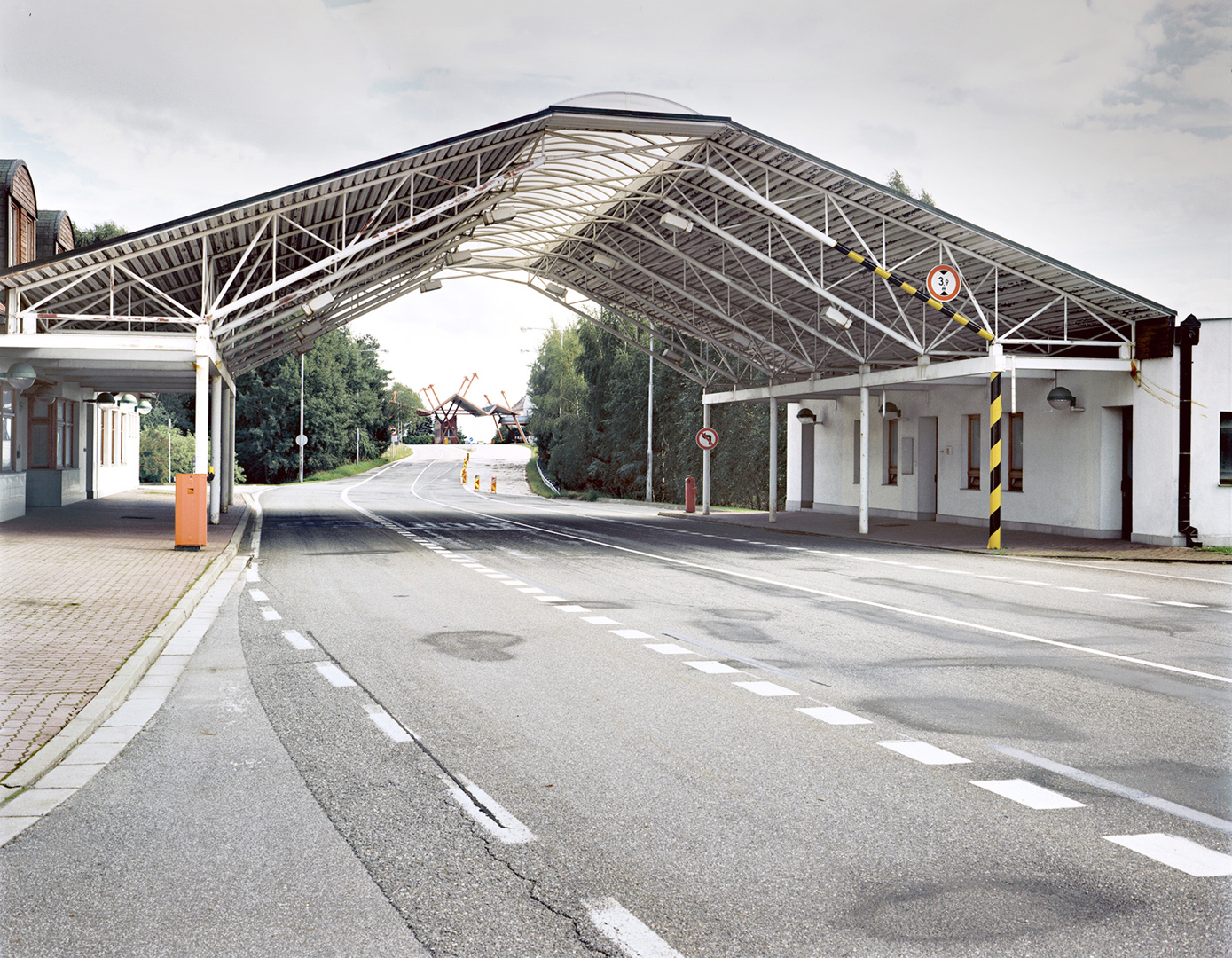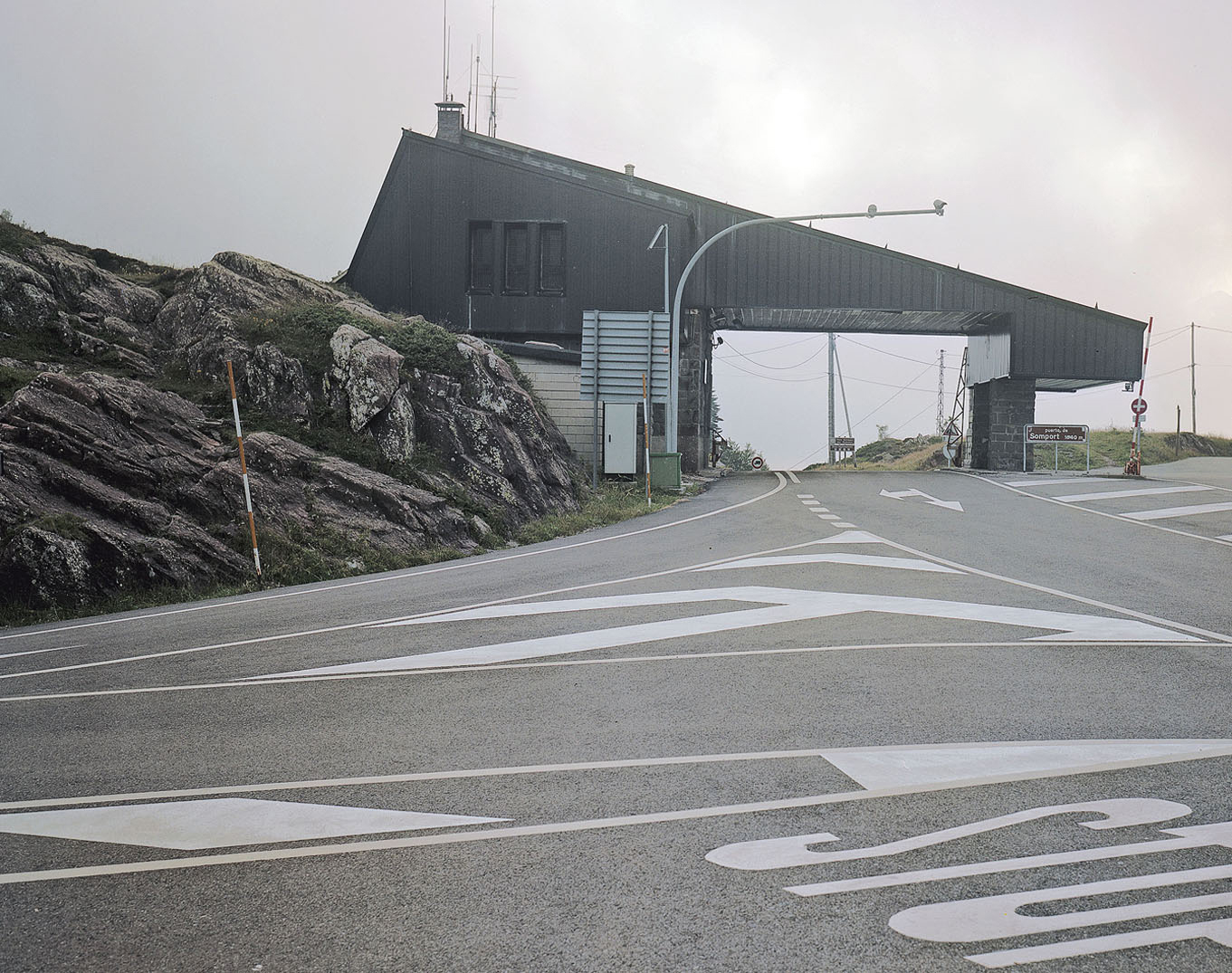Architecture does not exist in a vacuum. It depends on its context. It is the expression of a specific time with specific characteristics. As these circumstances change, the architecture can become out of sync with its current context.
The creation of borders often entails the construction of border crossings. That’s what has happened and still is happening all over the world. But borders can also disappear.
In 1985 the Schengen Treaty was signed by five of the then ten EU states, with the intention to abolish border checks between these countries, allowing people and goods to flow freely between these countries. The treaty was introduced in 1995, with more and more nation states joining the agreement thereafter. Currently it consists of 26 European countries.
The disappearance of the border checks rendered many of these checkpoints obsolete. Almost 20 years on (and while the discussion about the European project is resurfacing), former border crossings lie abandoned across the continent, still in the same place as decades ago yet disconnected from the time in which they functioned. Here, the symbolic value of the sovereign nation state has vanished, together with the restaurants and other amenities that these places of transition once housed.
Photographer Ignacio Evangelista set out on several trips across Europe to capture these left-behind border structures, many of them have not stood the test of time, turning into a slowly fading architectural memory of a political situation that no longer exists.

